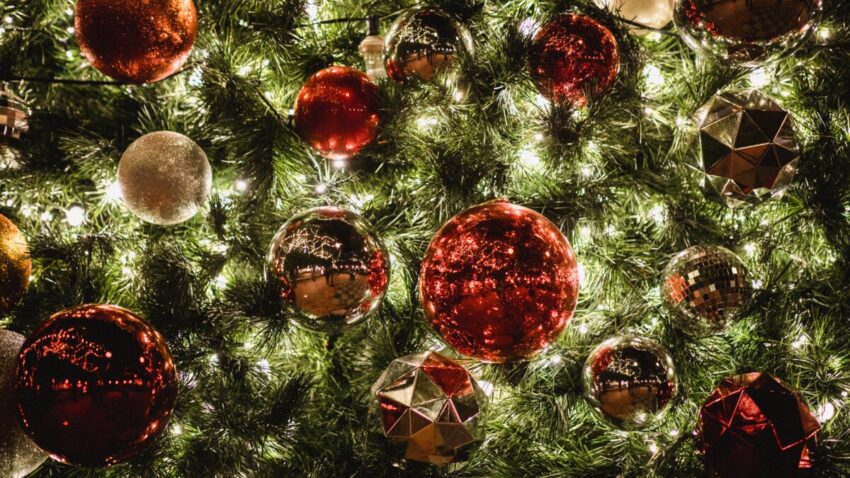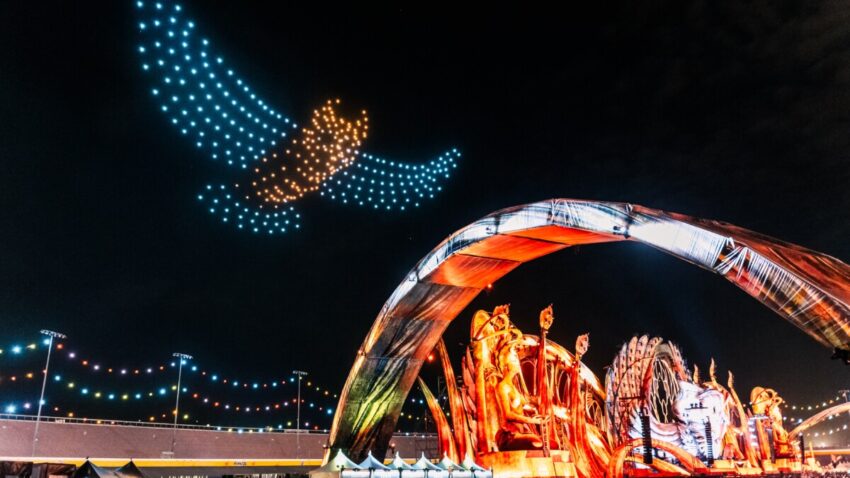What is the holiday season without its lights? The tradition of holiday lights – specifically in Christmas trees – was made popular by the 1848 issue of The Illustrated London News. The image of the candle-illuminated tree at Windsor Castle was published, inspiring the public and popularizing the idea of decorated Christmas trees. The British royal family was headed by Queen Victoria and Prince Albert, both of whom had German heritage. The tradition of decorating Christmas trees is German, and the two introduced that tradition to Windsor Castle, the British public, and the rest of the world.
From fire to light
While festive, there were dangers associated with decorating a flammable, dead tree with candles illuminated by flames. Many precautions had to be taken, requiring a relatively fresh, live evergreen tree and buckets of water surrounding that tree. However, after the invention and commercialization of the light bulb by Thomas Edison in 1880, decorating trees with lights became significantly more feasible. In 1882, Edison’s friend Edward H. Johnson created the first string of Christmas lights with 80 red, white, and blue light bulbs wrapped around an evergreen tree. The idea quickly took off, and thirteen years later, the White House Christmas tree was completely decked out in such lights.
However, after the invention and commercialization of the light bulb by Thomas Edison in 1880, decorating trees with lights became significantly more feasible. In 1882, Edison’s friend Edward H. Johnson created the first string of Christmas lights with 80 red, white, and blue light bulbs wrapped around an evergreen tree. The idea quickly took off, and thirteen years later, the White House Christmas tree was completely decked out in such lights.
The lights that Edison created – also known as incandescent lights – were not very energy efficient. The lights you commonly see in holiday shows are not incandescent but LEDs. LED – or Light Emitting Diode – lights are often advantageous over incandescent lights because of their energy efficiency, longevity, durability, and compactness. While LEDs may seem like a recent invention, they were invented nearly 60 years ago. However, it’s only recently that technology has progressed so that LEDs can be used readily.
A bright idea: Protecting IP for holiday lights
The first patent (Pat. No. 3,293,513) for LED lights was granted to James Biard and Gary Pittman on December 20, 1966. The LEDs, while producing infrared light from electricity, were not visible to the eye. Paul Bailey greatly improved this with his patent (Pat. No. 4,039,890), granted on August 2, 1977. With his patent, multiple colors could be showcased using LED lights. While LED lights are useful for the holidays, they are also in the technology we regularly use today, especially in our digital devices.
There have been recent advances in the technology of LED lights. In 2013, Kenneth Wells and Victor Hatch (Pat. No. 8,614,632) created a system that could produce a light show, given specific music, allowing for the coordinated music and light shows we regularly see during the holidays. In the past, before this invention, people would have to individually program lights to a specific song. Now, this system and its automation allow for an easier method of doing so and provide a harmonizing experience.
Technological advances in holiday lights
Nowadays, technology has progressed faster than ever. In recent years, drone light shows have become more popular, providing a more eco-friendly alternative to fireworks shows. While impressive, they are difficult to coordinate.

A lighted drone display at Las Vegas Motor Speedway.
Each drone needs to be fitted with LED lights, and individually programmed to follow specific flight paths and color sequences, all while being coordinated with the other hundreds of drones. Disney recently filed for a drone-related patent in August of 2019. They patented a drone that could animate show aspects and change directions more efficiently, allowing for a more dynamic show experience.
While technology has helped larger light shows become more impressive, it has also increased the ease and accessibility of having holiday lights for those at home who want a similar experience but on a smaller scale. The recent technologies of Bluetooth create a more user-friendly light display control and provide an easy communication method between the user and the lights. Excessive wiring and cable management are no longer needed. In addition to Bluetooth are computer software programs. These programs allow users to create custom sequences that cater to their preferences and allow them to arrange such sequences at times that work best for them. These programs also allow users to integrate music and other devices into their own personalized light shows at home that are dynamic, synchronized, and programmable.
As time progresses, so will technology. Who knows how holiday light shows will look with the help of inventors? Who knows, maybe in 50, 20, or even five years in the future, the so-called “modern” light shows that we’re accustomed to can soon be antiquated.
– Angela Chan